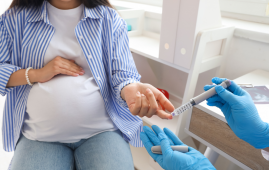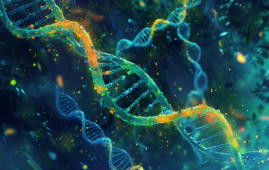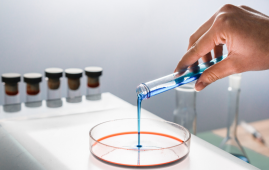

In humans, severe brain injuries or head trauma can result in various stages of so-called disorders of consciousness (DoC). Coma, unresponsive wakefulness syndrome, often known as a vegetative state, and minimally conscious states are examples of states in which consciousness is either partially or completely absent.
Accurately evaluating patients who have lost consciousness is critical because it helps clinicians to decide what medications to administer and how to assist consciousness re-emergence. To clinically measure consciousness, clinicians typically study patients’ responses to sensory stimuli such as noises or images.
individuals with MCS, for example, display some actions that imply they are conscious while individuals in a vegetative state are awake but remain unresponsive to external stimuli. So far, most methods for assessing patients’ consciousness levels have relied on audio or visual stimuli, although olfactory stimuli could also be effective.
Researchers from Southern Medical University in China recently conducted a study to determine whether odors may be used to assess consciousness in individuals in a coma or vegetative state. Their findings, published in Frontiers in Neuroscience, appear to highlight the utility of olfactory stimuli in clinical settings for measuring awareness.
“This study aimed to explore whether olfactory response can be a sign of consciousness and represent higher cognitive processing in patients with disorders of consciousness (DoC) using clinical and electroencephalogram data,” Wanchun Wu, Chengwei Xu, and their colleagues wrote in their paper.
The researchers analyzed the responses of 28 individuals at various stages of DoC to olfactory stimuli as part of their study. Thirteen of these patients were in a vegetative state (UMS) and fifteen were in a coma (MCS). Participants in the study were separated into two groups based on whether or not they responded to olfactory stimuli.
“We recorded an olfactory task-related electroencephalogram (EEG) and analyzed the relative power and functional connectivity at the whole-brain level in the patients with DoC and healthy controls (HCs),” Wu, Xu and their colleagues wrote. “After three months, the outcomes of DoC patients were followed up using the coma recovery scale-revised (CRS-R)” [i.e., a standard assessment used to measure DoC in clinical settings].
When Wu, Xu, and their colleagues reviewed the data, they discovered a link between the patients’ olfactory responses and their levels of consciousness. They also discovered that after being exposed to the vanillin scent, patients in the no-olfactory reaction group had stronger theta functional connectivity than patients in the olfactory response group, as well as lower alpha and beta relative powers than healthy volunteers with no DoC.
The three-month follow-up data revealed that 10 of the 16 patients who responded to olfactory stimuli throughout the trial had recovered consciousness, but just 2 of the 12 individuals who did not respond to olfactory stimuli had. This implies that a brain reaction to olfactory stimuli is usually a sign that a patient with DoC is gradually recovering and regaining awareness.
In the future, the work of this study team could help to develop new ways for assessing the state of consciousness of patients with varied DoC. Furthermore, it may help future research into the relationship between consciousness and brain responses to scents.
“Olfactory responses should be considered signs of consciousness,” Wu, Xu and their colleagues explained in their paper. “The differences in olfactory processing between DoC patients with and without olfactory responses may be a way to explore the neural correlates of olfactory consciousness in these patients. The olfactory response may help in the assessment of consciousness and may contribute to therapeutic orientation.”
more recommended stories
 Spatial Computing Explains How Brain Organizes Cognition
Spatial Computing Explains How Brain Organizes CognitionKey Takeaways (Quick Summary) MIT researchers.
 Gestational Diabetes Risk Identified by Blood Metabolites
Gestational Diabetes Risk Identified by Blood MetabolitesKey Takeaways (Quick Summary for Clinicians).
 Phage Therapy Study Reveals RNA-Based Infection Control
Phage Therapy Study Reveals RNA-Based Infection ControlKey Takeaways (Quick Summary) Researchers uncovered.
 Pelvic Floor Disorders: Treatable Yet Often Ignored
Pelvic Floor Disorders: Treatable Yet Often IgnoredKey Takeaways (Quick Summary) Pelvic floor.
 Urine-Based microRNA Aging Clock Predicts Biological Age
Urine-Based microRNA Aging Clock Predicts Biological AgeKey Takeaways (Quick Summary) Researchers developed.
 Circadian Control of Neutrophils in Myocardial Infarction
Circadian Control of Neutrophils in Myocardial InfarctionKey Takeaways for HCPs Neutrophil activity.
 E-Cigarette Use and Heart Attack Risk in Former Smokers
E-Cigarette Use and Heart Attack Risk in Former SmokersKey Takeaways for Clinicians and Nurses.
 36-Week Pre-eclampsia Screening May Reduce Term Risk
36-Week Pre-eclampsia Screening May Reduce Term RiskA New Preventive Strategy for Term.
 Cardiovascular Risk and Sudden Cardiac Death in Diabetes
Cardiovascular Risk and Sudden Cardiac Death in DiabetesRising Sudden Cardiac Death (SCD) Risk.
 Poor Kidney Function and Alzheimer’s Biomarkers Explained
Poor Kidney Function and Alzheimer’s Biomarkers ExplainedPoor kidney function may influence levels.

Leave a Comment